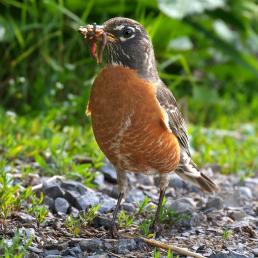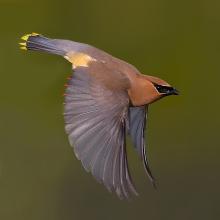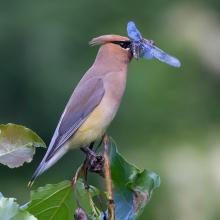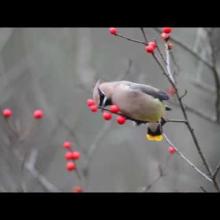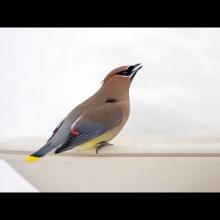

Join BirdNote tomorrow, November 30th!
Illustrator David Sibley and actor H. Jon Benjamin will face off in the bird illustration battle of the century during BirdNote's Year-end Celebration and Auction!
Cedar Waxwings eat predominantly fruit, especially in winter. As is the case with fruit-eaters, their distribution is unpredictable and largely dependent on the location and abundance of fruiting plants like serviceberry and mulberry (in summer) and mistletoe and madrone (in winter). Their breeding season is also later in the summer (early June - early August) to take advantage of when fruits ripen. And that's when we can hope to get lucky and see fledglings.
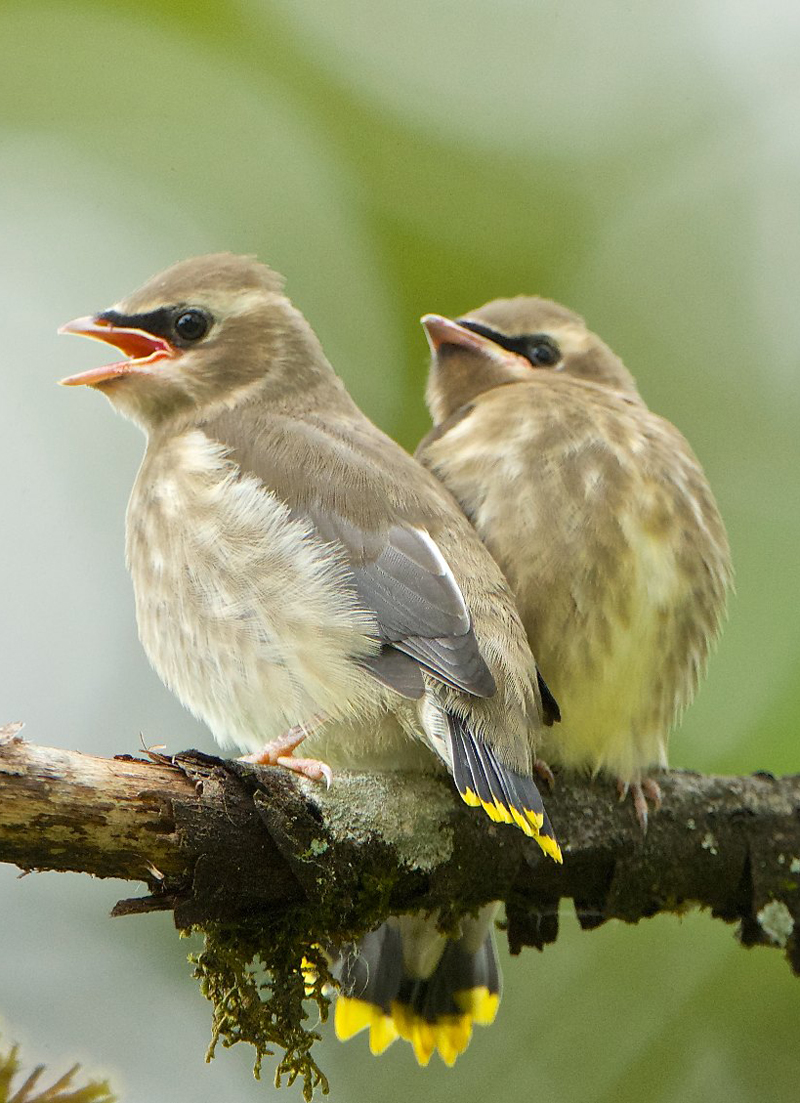
About four eggs are laid and, when the young hatch, the parents catch insects to feed the nestlings for the first few days. After Day 3, more fruit is introduced into their diet. The young will leave the nest after two weeks although the parents will still feed them for about another week.
Here, a fledgling Cedar Waxwing begs for food from a parent.
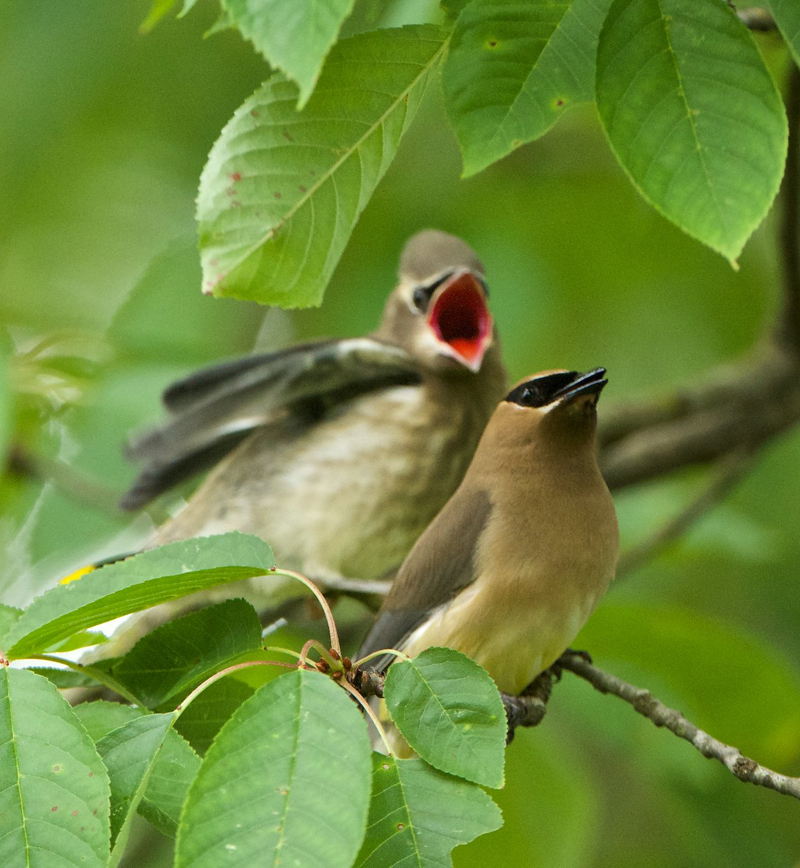
And below, two alert fledgling Cedar Waxwing await food from a parent.
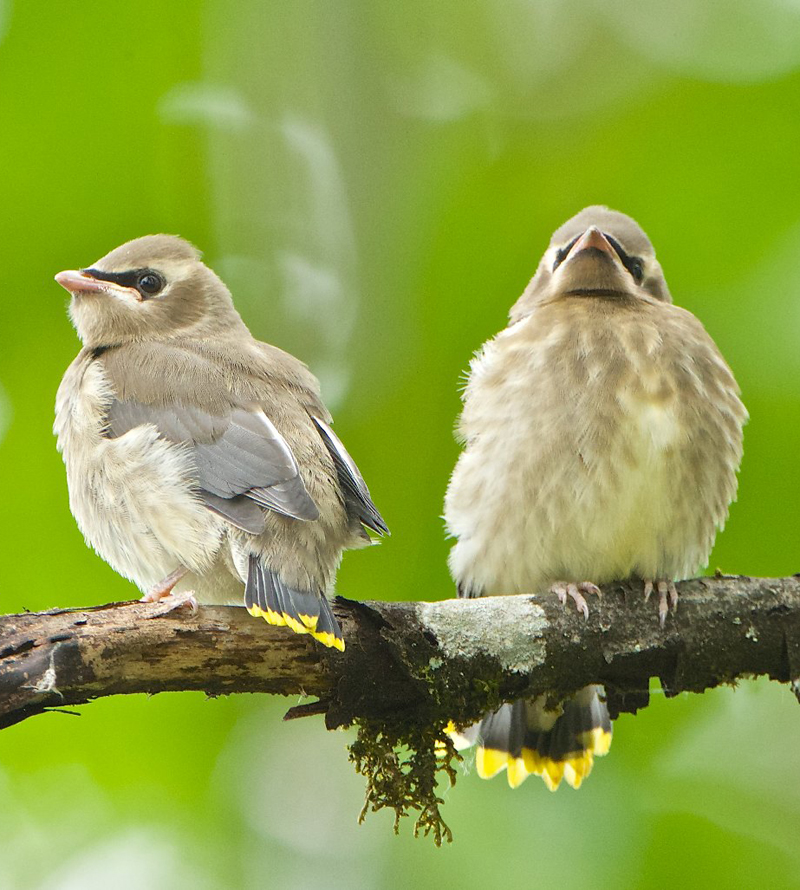
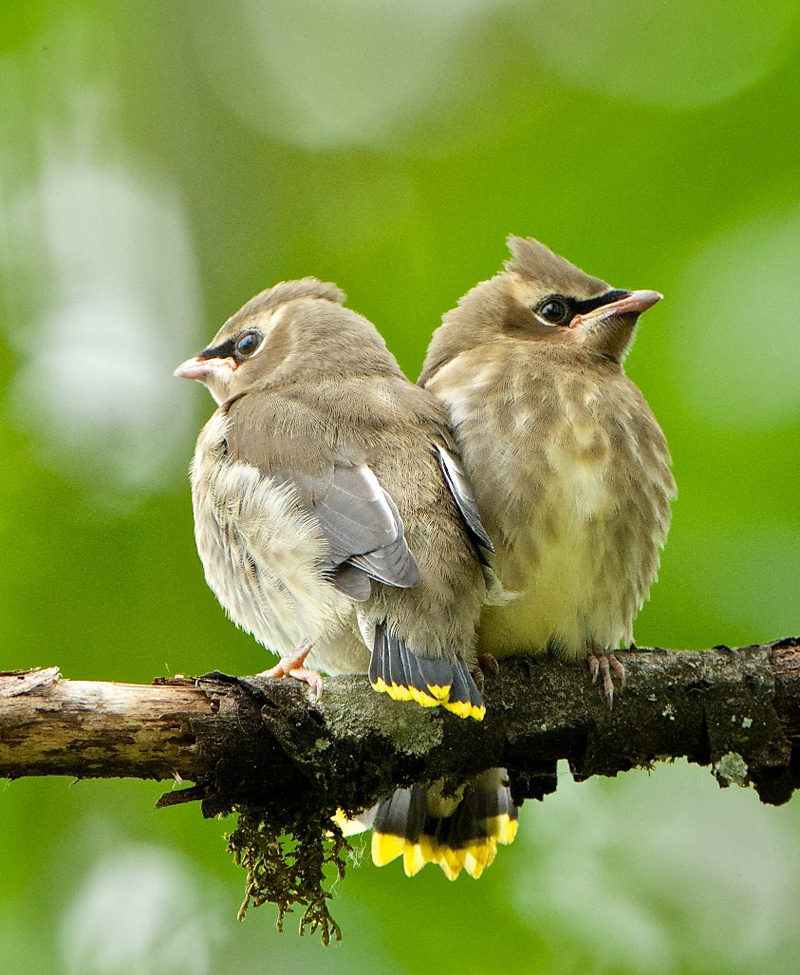
###
Listen to BirdNote shows involving Cedar Waxwings:
October Planting for Wildlife
Birds and Berries
Native Plants Attract Native Birds
Landscaping for Wildlife I - Interview with Russell Link
All photos © Gregg Thompson
